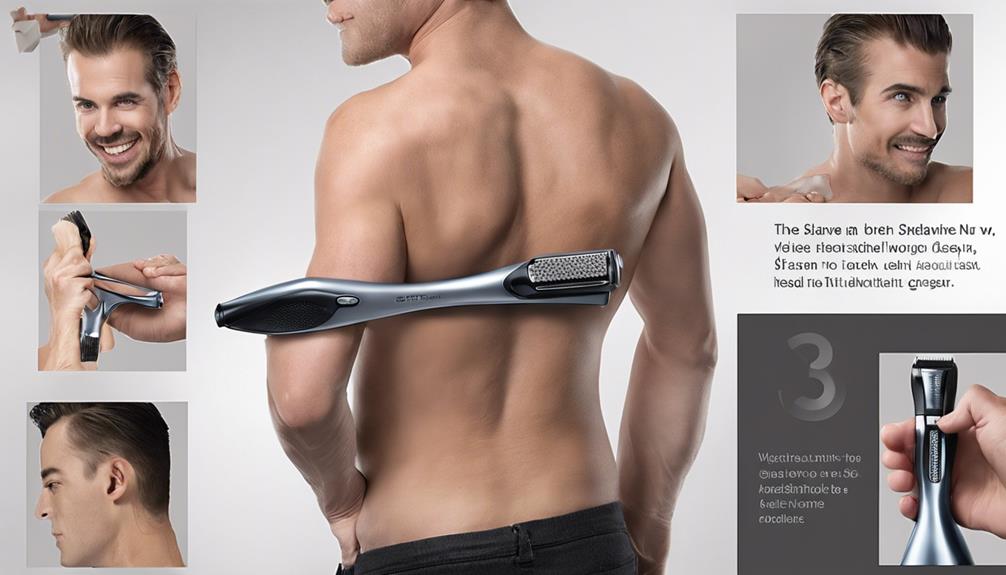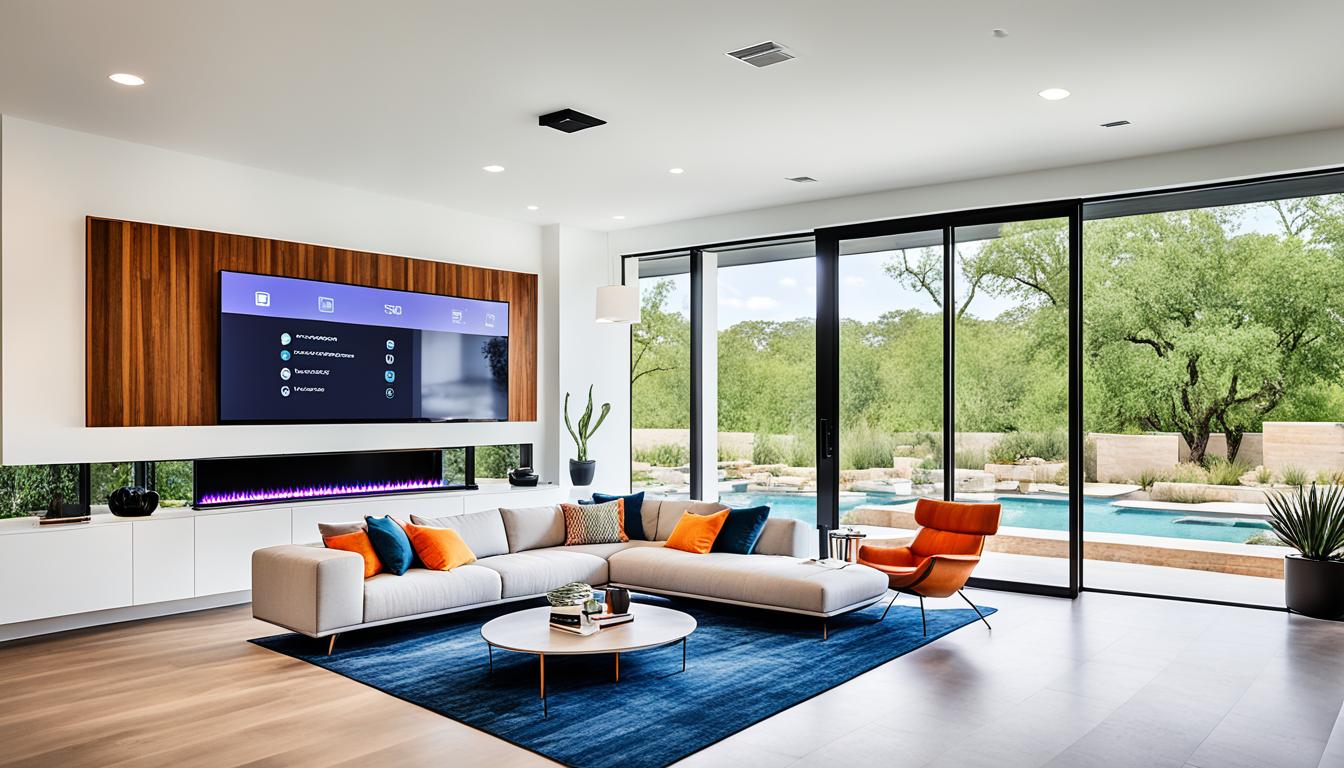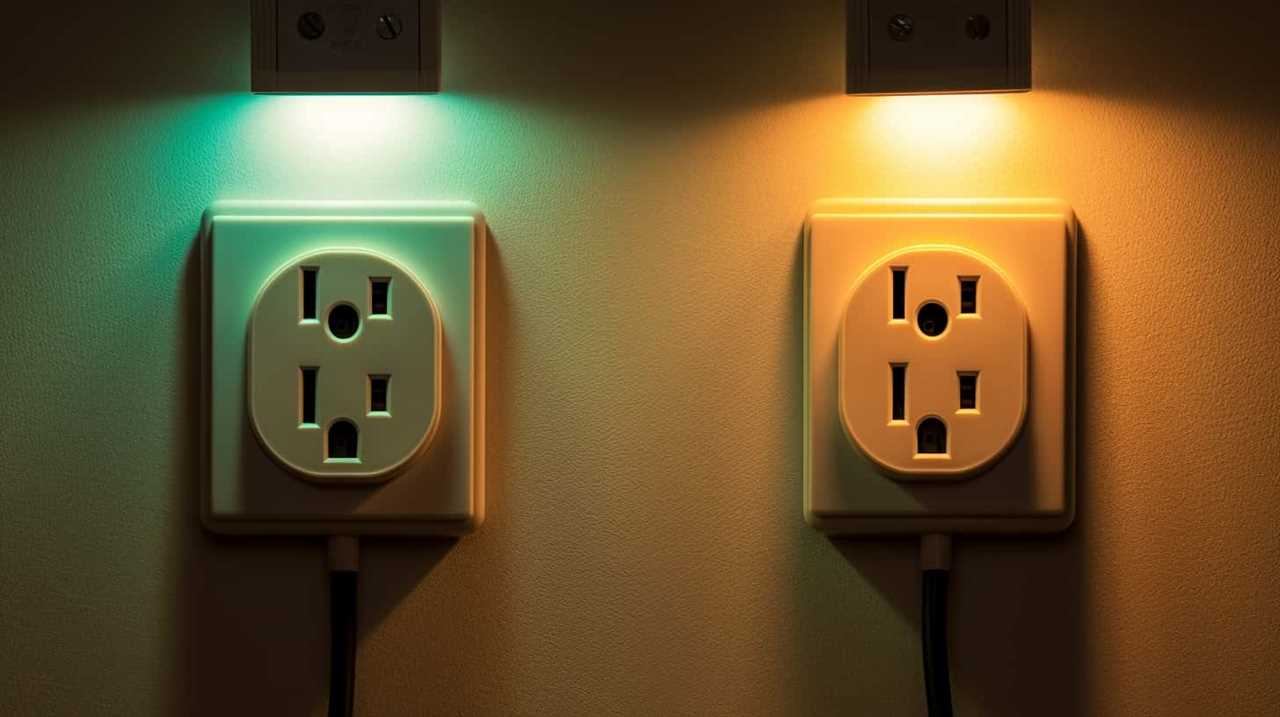Do you realize that the smart kitchen industry is projected to reach $40 billion by 2027? Our daily lives are becoming increasingly interconnected. Smart ovens equipped with Wi-Fi provide innovative cooking capabilities and convenience. However, is the premium price justified for these appliances?
CHOICE experts believe it’s not just yes or no. The value of a smart oven varies with personal needs, cooking styles, and budget. They bring high-tech ease but are pricier than standard ovens that also cook well.
Key Takeaways:
- The global smart kitchen appliance market is expected to reach $40 billion by 2027.
- The worthiness of a smart oven depends on individual needs, cooking preferences, and budget.
- Smart ovens offer advanced features and convenience, but they can be expensive compared to regular ovens.
- Regular ovens can still provide excellent cooking performance at a lower cost.
- Ultimately, the decision to invest in a smart oven should consider personal cooking habits and the value of added features.
What is a Smart Oven?
A smart oven is a wall oven that connects to the internet. You can control it from far away using a smartphone app or voice. It has features for easier and more accurate cooking. These include pre-set cooking modes, temperature sensors, and probes. A smart oven even has cameras to watch your food cook, making sure it’s just right.
Smart ovens do more than regular ovens. They remember how you like to cook, making your favorite meals easy to make again. Also, they work with other smart devices in your home for a smooth cooking experience.
Key Features of a Smart Oven
- Remote control via smartphone app or voice commands
- Pre-programmed cooking settings for various dishes
- Temperature sensors and probes for precise cooking
- Built-in cameras to monitor cooking progress
- Saving cooking preferences for quick and easy use
- Integration with other smart home devices
Smart ovens change how we cook. They make cooking easier and faster. You can do other things while cooking without worry. Say goodbye to meals that are too cooked or not enough.
A smart oven brings convenience and efficiency to our kitchens, allowing us to multitask and have more control over our cooking process.
If you’re good at cooking or just starting, a smart oven helps you. With its advanced tech, your cooking gets better. Try new dishes, explore foods from around the world, and always enjoy tasty meals.
Smart ovens are also easy for everyone to use. They have simple controls and apps. You don’t need to be a tech genius to use one. So, no stress about setting it up or figuring it out.
Now, we’ll look at what a smart oven can do. From controlling it remotely to automatic settings, we’ll see why it’s a must-have in the kitchen.
What Can a Smart Oven Do?
A smart oven does more than a regular oven. It has features that make cooking easy and exact.
- Remote control via an app: You can control a smart oven from any place in your home. Use a smartphone app to see and change how your food cooks.
- Voice control using smart assistants: They work with Amazon Alexa and Google Assistant. Just talk to set the oven, timers, or change temperatures.
- Automatic programs for different dishes: Smart ovens have cooking programs for various dishes. This makes cooking times and temperatures right, so no need to guess.
- Compatible recipe apps or inbuilt recipes: Some have recipes built-in or work with recipe apps. This helps to find many recipes, get cooking steps, and even send them to the oven.
- Temperature probes for precise cooking: Many come with probes to check food’s internal temperature. This ensures your food cooks perfectly.
- Settings for unique cooking functions: They may have settings like convection cooking and slow cooking. These let you try new cooking methods.
- Real-time alerts: Smart ovens can send notifications to your phone. They tell you when it reaches the right temperature or when to check the food.
- In-built cameras to view food while cooking: Some have cameras to watch your food without opening the door. This helps to see how well it cooks.
Smart ovens bring a new level of help, accuracy, and control to cooking.
Pros of Smart Ovens
Smart ovens offer numerous benefits that make them a valuable addition to any kitchen. They help both expert and beginner cooks. They provide guidance and make cooking easier.
One of the key advantages of smart ovens is their remote control functionality. You can control your oven from anywhere with a smartphone app. This lets you preheat your oven on your way home. It also lets you adjust cooking settings without being in the kitchen. This saves you time and effort.
Smart ovens let you personalize your cooking settings for precise results. You can cook your steak just how you like it. Or get your bread perfectly browned. This level of control lets you try new cooking techniques and recipes.
Smart ovens are also good for saving energy. They use less energy, which saves you money and helps the planet. Some even turn off automatically or remind you to do so. This makes them safer and more energy-efficient.
A standout feature of smart ovens is the integrated temperature probe. It makes sure your food is cooked just right. Whether it’s a turkey or a cake, the probe gives accurate readings. This means your meals are always delicious and well-cooked.

The Pros of Smart Ovens:
| Advantages | Description |
|---|---|
| Convenience | Control your oven remotely; preheat while away |
| Customizability | Adjust settings for precise cooking results |
| Energy efficiency | Optimized energy consumption and safety features |
| Integrated temperature probe | Ensures perfectly cooked food every time |
Cons of Smart Ovens
Smart ovens have many pros, but there are some cons to think about too. Here are the main downsides to know before buying one:
- Higher Cost: Smart ovens cost more than regular ovens. They have advanced tech and features that make them pricey. Think about if the extra features are worth the cost to you.
- Early-stage Technology: Smart oven tech is still new. So, there aren’t many models out there. If you want more choices, this could be a problem.
- Complicated Features: The advanced features in smart ovens can be hard to use. You might need time to learn how to use them. Think about if you’re okay with this before buying.
- Debatable Value for the Extra Cost: Whether smart ovens are worth the extra cost is up to you. Some people love the new features, while others don’t see the point. Consider whether the benefits are worth the price for you.
- Safety and Security Concerns: You can control smart ovens with your phone or voice. This is handy but can also be risky. There’s a chance of getting hacked. Make sure you’re okay with these risks.
- Cost of Repairs: Fixing a smart oven usually costs more than fixing a regular one. The high-tech parts can make repairs hard and expensive. Keep this in mind for the long run.
Even with these downsides, smart ovens are getting better all the time. Knowing these cons helps you choose wisely. Decide if a smart oven fits your kitchen and your needs.
Smart Oven Safety and Security
Smart ovens need to be used safely and securely. They often have safety features like child locks and auto shut-offs. But it’s key to know what they can’t do too.
It’s not safe to leave a smart oven alone while it’s on, even if you can control it from far away. Being able to control it remotely might make you think it’s safe, but accidents can still happen.
Before you buy a smart oven, it’s smart to check its safety features. Look for brands known for safety and reliability.
The Security Aspect
With smart ovens, there’s a worry about the security of the oven app and your info. Any smart device, including ovens, could be hacked if it’s connected to the internet.
It’s important to check what security steps an oven’s maker has taken. Choose ovens with strong security and updates for safety.
Weighing the Benefits and Risks
Smart ovens can make cooking more fun with their cool features. But, using anything connected to the internet has some privacy risks.
Think about how much tech you really need in the kitchen. Smart ovens are handy with remote control and special features. But regular ovens can cook well too, and they’re cheaper.
Choose what’s best for you by thinking about what you need and the risks you’re okay with. A smart kitchen should make your life better and safer.

| Safety | Security |
|---|---|
| Child locks | Encryption protocols |
| Emergency auto switch-offs | Regular security updates |
| Risk of leaving appliance unattended | Potential vulnerabilities to hacking |
| Protection of personal data |
Are Smart Ovens Worth the Cost?
Thinking about buying a smart oven? The price is a big part of the decision. Smart ovens can cost between $3000 and $10,000. They have cool tech and features, but it’s good to think about if they’re worth the money.
It’s smart to compare smart ovens with regular ones. Regular ovens can cook well and cost less. Many are under $3000. This makes regular ovens a good choice for those saving money.
Deciding on a smart oven depends on what you need and like. If you love new technology and controlling your oven remotely, a smart oven might be right for you. But, if you’re happy with a regular oven, it might be the better option.
Think about the long-term costs too. Smart ovens have new features but might have issues. Regular ovens are reliable and might fit your cooking style better.
To choose wisely, think about what you really need in your kitchen. Look at different brands and models. Read what other buyers say. This will help you find the perfect oven for you.

Smart Ovens vs. Conventional Ovens
Comparing smart ovens and conventional ones means looking at what you need. Smart ovens are advanced and easy to use. They connect to Wi-Fi and have new features. Yet, they cost more than conventional ovens.
Conventional ovens might not be as fancy, but they cook well and are cheaper. They are time-tested and common in homes.
Smart ovens have the latest technology and work with smart home devices. But, you can still cook great meals with a conventional oven without spending much. These ovens have features for different cooking styles.
Choosing between a smart oven and a conventional one is about what you prefer. If you like controlling your oven remotely, get a smart oven. If you want something cheaper but still good, consider a conventional oven.
In the end, think about your cooking habits, budget, and how much you like technology. The choice is yours.
Best Smart Ovens in the Market
Looking for the best smart oven for your kitchen? There are many great options out there. Two of the top picks are the Tovala Smart Oven and the June Oven. Both bring convenience and innovation to your cooking.
The Tovala Smart Oven stands out with cool features. It can scan foods or barcodes to adjust cooking settings perfectly. Plus, it recommends recipes and works with voice control. This makes it super easy to use.
The June Oven is also a top choice. It has an internal camera to watch your food cook. Like the Tovala, it suggests recipes and comes with voice control. Cooking becomes simpler with its smart features.
Before choosing between the Tovala Smart Oven and the June Oven, do some research. Look at different models to see what fits your needs. Think about cooking capabilities and features for convenience. This will help you pick the best smart oven.

Comparison of Key Features
| Tovala Smart Oven | June Oven | |
|---|---|---|
| Food Scanning | ✓ | ✗ |
| Recipe Recommendations | ✓ | ✓ |
| Voice Control Compatibility | ✓ | ✓ |
| Internal Camera | ✗ | ✓ |
Considerations When Buying a Smart Oven
Buying a smart oven involves several key factors. We will help you understand what to look for. Making the right choice for your kitchen becomes easier.
Cooking Habits
First, think about how you cook. Consider the dishes you make often and your cooking methods. This will guide you to the smart oven features you need. For example, precise temperature control could be crucial for roasting meats or baking pastries.
Budget
It’s important to set a budget. Smart ovens vary in price based on brand and features. Balance your desired features with your budget. Also, think about long-term benefits and energy savings a smart oven might bring.
Preferred Features
Consider which features are important to you. Maybe you want voice control or an app that’s easy to use. Having a camera inside the oven to watch your food might be helpful. List your must-have features before you shop.
Reputable Brands and Performance
Pick a smart oven from a brand that’s known for quality. Read reviews and ratings to learn about satisfaction and reliability. Choose ovens that experts recommend for good cooking performance.
Compatibility
If you have other smart home devices, check compatibility. This ensures your smart oven works well with existing devices. It enhances your smart home experience.
Ease of Use
The oven’s app or voice system should be easy to use. An intuitive interface is key. It should let you easily adjust settings and functions. This makes cooking more enjoyable.
Reviews and Comparisons
Read customer reviews and compare models before deciding. Look at feedback on performance, durability, and support. Comparing ovens helps you make a better choice for your needs.
| Considerations When Buying a Smart Oven |
|---|
| Cooking Habits |
| Budget |
| Preferred Features |
| Reputable Brands and Performance |
| Compatibility |
| Ease of Use |
| Reviews and Comparisons |
Keep these points in mind when choosing a smart oven. This ensures you find the best fit for your needs, budget, and cooking style. By evaluating these factors, you can pick confidently. Enjoy the perks of a smart oven in your kitchen.

Conclusion
Smart ovens bring new features and ease to the kitchen. But, their value really depends on what each person needs, likes, and can afford. Even though smart ovens have cool tools like remote control, talking commands, and special temperature checks, old-school ovens still do a great job cooking. And they cost less.
Thinking about getting a smart oven? Price is a big thing to consider. Smart ovens are usually more expensive than regular ones. Also, as the tech gets better, the prices might go up. For someone watching their spending, a normal oven might be the smarter pick. It can cook just as well without costing a lot.
Choosing what’s right for you means looking at how you like to cook. Ask yourself if you’d use features like controlling the oven from afar or using voice commands. These extra bits should make cooking easier and more fun for you. It’s all about whether they’re worth it in your daily cooking life.
To wrap it up, smart ovens are packed with cool tech and can make cooking simpler. But, they’re not the perfect fit for everybody. Think about what you really need in your kitchen, what you enjoy about cooking, and what you’re willing to spend. This way, you’ll know if a smart oven is a good buy for you.










